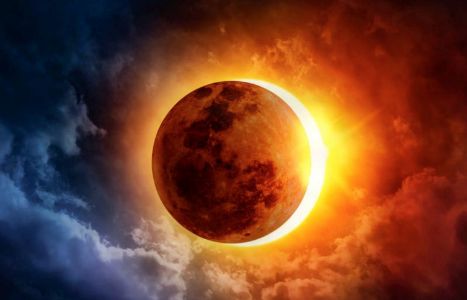
-
Published: 24 October 2022

This is the world is witnessing, Tuesday, the sixteenth partial solar eclipse of the XXI century, the second this year
Which includes large areas of the northern hemisphere, in a phenomenon lasting two hours will not lead to complete darkness, but those wishing to follow it should be careful.
The phenomenon begins on Tuesday at 08:58 GMT in Iceland, and ends at 13.02 GMT off India, passing through Europe, northeast Africa and the Middle East, according to the French Institute of celestial mechanics and the ephemeris calculation of the Paris Observatory.
A solar eclipse occurs when the sun, moon and Earth align in a straight line. And when the alignment is almost perfect, the cone of the moon's shadow touches the Earth's surface and blocks the entire solar disk, at which point the eclipse is total.
This time, the shadow of the moon will not touch the Earth and"it will not be possible to observe the complete disappearance of the sun's disk anywhere,"the Paris Observatory explained in a statement،
At the maximum of the eclipse expected over Kazakhstan, the sun will be hidden by 82,2%, "but that will not be enough to cause complete darkness" in broad daylight, Paris Observatory astronomer Florent delevilly told AFP.
"To start feeling the darkness in the sky, to perceive some kind of cold light, you need at least a 95% blackout on the sun,"he added.
Residents of the respective regions will be able to see the eclipse provided that the weather is good, by looking at the sun with suitable and new glasses, to avoid eye burns, or using magnifying instruments (binoculars or telescopes) with a filter, available at the centers that will organize the observation.
It can be seen over the South Pacific Ocean. And on the French mainland, the last partial eclipse dates back to June 10, 2021.
According to the Paris Observatory, on August 12, 2026, a total eclipse will occur that will darken the solar disk by 92 percent
